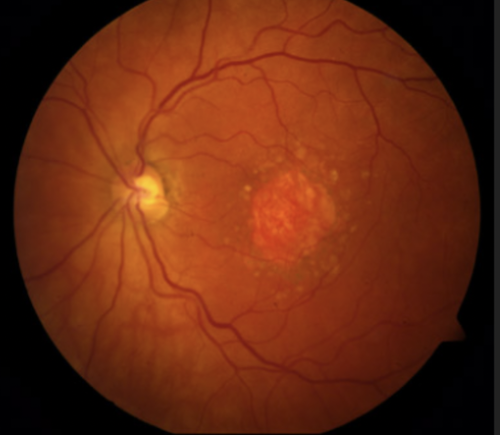Approximately 20% of patients with age-related macular degeneration (AMD) will develop a condition called geographic atrophy (GA). It is considered a late stage of AMD and involves chronic, progressive degeneration of regions of the retina due to cells wasting away and dying (atrophy). Upon examination by an ophthalmologist or retina specialist, these areas of atrophy often look like a map which led to the term “geographic atrophy.”
GA leads to central scotomas, which are blind or blurry spots in the central field of vision. These areas typically expand over time, gradually causing permanent loss of visual acuity. GA can occur in one eye or both, but if a patient has it in one eye, they are more likely to develop it in the other as well. The condition may remain asymmetric (unequal) in the other eye for a while and progresses slowly. Sudden loss of central vision does not commonly occur with GA.
Symptoms
The first things most patients with GA notice are missing letters in a word as they are reading or not being able to see a small part of someone’s face.
Risk Factors
GA has been studied extensively. However, the cause of the condition is not fully understood. There are a few factors that seem to increase the risk of developing GA:
- Increasing age
- Family history of AMD
- Smoking (both current and former smokers)
- Use of thyroid hormones or antacids
- Coronary artery disease
- Poor baseline visual acuity (especially 20/200 or worse)
Diagnosis
Your ophthalmologist or retina specialist can perform a dilated eye exam or use retinal imaging such as optical coherence tomography (OCT) to diagnose GA.
Treatment
Unfortunately, there are no current treatments that can stop or reverse GA. However, there are a number of active Phase II and III clinical trials testing potential new treatment options to reduce the rate of GA progression. Texas Retina Associates physicians are involved in a number of these studies. You can learn more about them here.


